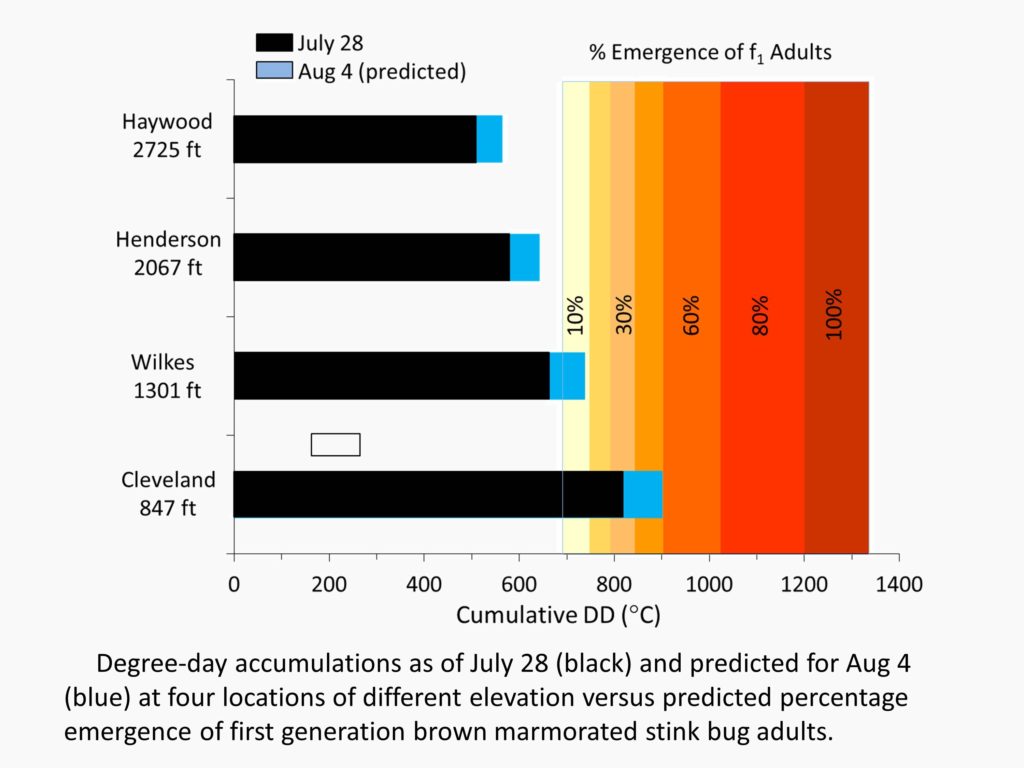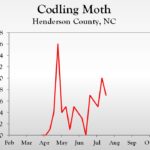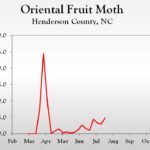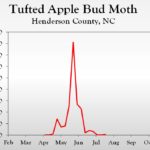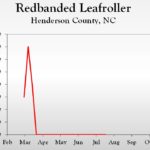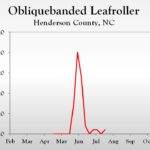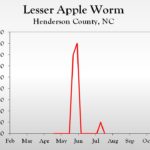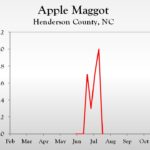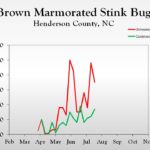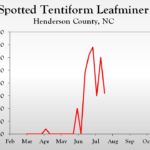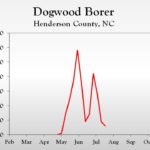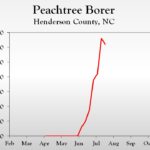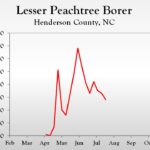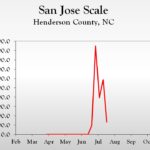WNC Orchard Insect Pest Populations – July 28, 2020
go.ncsu.edu/readext?715765
en Español / em Português
El inglés es el idioma de control de esta página. En la medida en que haya algún conflicto entre la traducción al inglés y la traducción, el inglés prevalece.
Al hacer clic en el enlace de traducción se activa un servicio de traducción gratuito para convertir la página al español. Al igual que con cualquier traducción por Internet, la conversión no es sensible al contexto y puede que no traduzca el texto en su significado original. NC State Extension no garantiza la exactitud del texto traducido. Por favor, tenga en cuenta que algunas aplicaciones y/o servicios pueden no funcionar como se espera cuando se traducen.
Português
Inglês é o idioma de controle desta página. Na medida que haja algum conflito entre o texto original em Inglês e a tradução, o Inglês prevalece.
Ao clicar no link de tradução, um serviço gratuito de tradução será ativado para converter a página para o Português. Como em qualquer tradução pela internet, a conversão não é sensivel ao contexto e pode não ocorrer a tradução para o significado orginal. O serviço de Extensão da Carolina do Norte (NC State Extension) não garante a exatidão do texto traduzido. Por favor, observe que algumas funções ou serviços podem não funcionar como esperado após a tradução.
English
English is the controlling language of this page. To the extent there is any conflict between the English text and the translation, English controls.
Clicking on the translation link activates a free translation service to convert the page to Spanish. As with any Internet translation, the conversion is not context-sensitive and may not translate the text to its original meaning. NC State Extension does not guarantee the accuracy of the translated text. Please note that some applications and/or services may not function as expected when translated.
Collapse ▲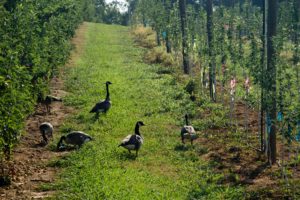 Codling moth pheromone trap captures remain low throughout the area, while oriental fruit moth captures have crept up in several locations during the past week. The only location where first-generation BMSB adult emergence is underway and remains in lower-elevation (<1000 ft) sites, although emergence is predicted to begin next week in the Wilkes County area.
Codling moth pheromone trap captures remain low throughout the area, while oriental fruit moth captures have crept up in several locations during the past week. The only location where first-generation BMSB adult emergence is underway and remains in lower-elevation (<1000 ft) sites, although emergence is predicted to begin next week in the Wilkes County area.
Codling Moth and Oriental Fruit Moth (OFM)
Codling moth DD accumulations range from 1630 in Henderson County (2nd generation egg hatch about 35% complete) to 2250 in the Cleveland/Lincoln County region (2nd generation egg hatch is >80% complete). This is an important time to monitor for codling moth in Henderson County and other areas of similar elevation (about 2000 ft), because if populations are to appear in potentially damaging numbers, now is the likely time that will happen.
During the past week or so, OFM pheromone trap captures have increased in several locations. Although trap captures have not been excessively high, an insecticide application should be considered when numbers exceed about 10 moths per trap. In areas where a pyrethroid application was recently made for BMSB, that should also control OFM.
Brown Marmorated Stink Bug
The updated model output for emergence of first-generation BMSB predicts emergence occurring only in lower elevation orchards (<1000 ft), but emergence is predicted to begin in the Wilkes County region next week (see figure below). Emergence is considerably delayed at higher elevations such as Henderson and Haywood Counties, where adult emergence is still several weeks away.
Apple Maggot
We are entering that time when apple maggot flies often begin to emerge in abandoned orchards. We have not yet detected a significant emergence, suggesting that this year’s cooler weather is also delaying emergence of this pest.
Learn more about southeastern apple insect pests at the Apple Insect Management page.
2020 Average Weekly Trap Captures
| HENDERSON COUNTY | |||
| Insects per trap | |||
| Jul 13 | Jul 20 | Jul 27 | |
| Codling moth | 0.5 | 1.0 | 0.7 |
| Oriental fruit moth | 3.3 | 2.9 | 4.8 |
| Tufted apple bud moth | 0.0 | 0.0 | 0.5 |
| Redbanded leafroller | 0.0 | 0.0 | 0.0 |
| Obliquebanded leafroller | 1.0 | 0.0 | 1.0 |
| Lesser appleworm | 0.0 | 1.0 | 0.0 |
| Apple maggot (abandoned and research orchards) | 0.7 | 1.0 | 0.0 |
| Brown marmorated stink bug (commercial) | 1.1 | 1.2 | 1.7 |
| Brown marmorated stink bug (unsprayed) | 1.8 | 4.3 | 3.5 |
| Spotted tentiform leafminer | 15.0 | 30.0 | 16.0 |
| Dogwood borer | 28.0 | 9.0 | 6.0 |
| Peachtree borer | 21.0 | 33.0 | 31.0 |
| Lesser peachtree borer | 35.0 | 33.0 | 28.0 |
| San Jose scale | 785.0 | 1172.5 | 265.0 |
*Note that these averages illustrate only the timing of insect emergence and fluctuations in populations, and are not representative of population levels in any given orchard. The only way to have an accurate assessment of an individual orchard’s populations is to set up traps in that orchard.
2020 Accumulated Degree Days
| HENDERSON COUNTY | ||||
| Jul 13 | Jul 20 | Jul 27 | ||
| Codling moth (Biofix 4/20) | 1246 DD | 1406 DD | 1581 DD | |
| Oriental fruit moth (Biofix 3/30) | 1818 DD | 2008 DD | 2218 DD | |
| Tufted apple bud moth (Biofix 4/27) | 1560 DD | 1750 DD | 1960 DD | |
2020 Pest Trends (click to enlarge)
Visit WNC Orchard Insect Populations for archived posts.
Additional Resources
- Apple Insect Management Overview
- How to Monitor Apple Insect Pests (IPM)
- Brown Marmorated Stink Bug in North Carolina
- Integrated Orchard Management Guide for Commercial Apples in the Southeast
- Walgenbach Entomology Lab



